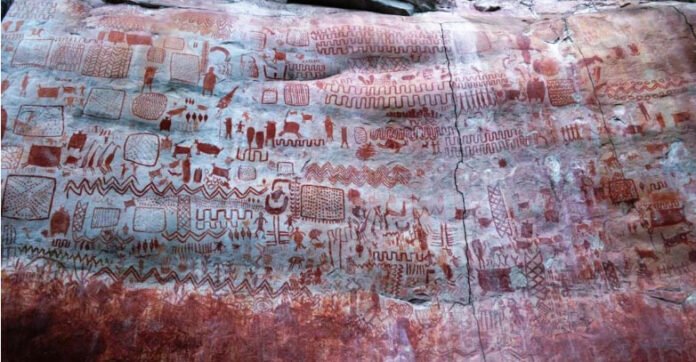An 8-mile-long “canvas” covered in ice age depictions of enormous sloths, mastodons, and other extinct animals has been found in the Colombian Amazon rainforest.
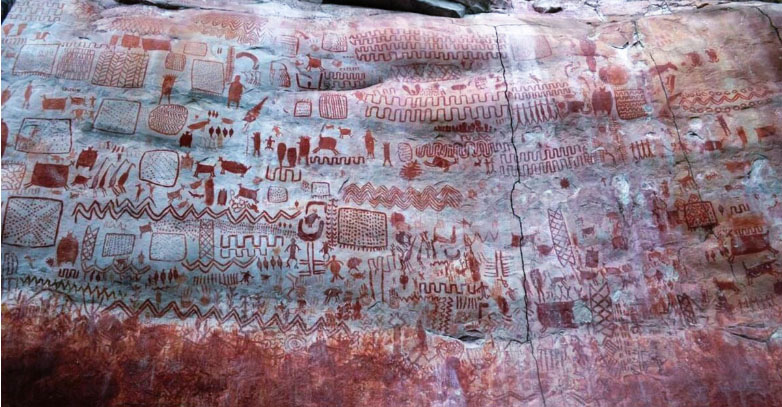
The incredible ochre drawings, a red natural clay pigment that was frequently employed as paint in antiquity, are found in the Colombian Amazon at a secluded location known as Serrana de la Lindosa. Over three rock shelters, they stretch across roughly 8 miles (13 kilometers) of rock on the slopes. The many, intricate images were created between 11,800 and 12,600 years ago, during a time when the planet was warming up and emerging from the Ice Age.
This ancient site was only recently made public after it was found by British and Colombian archeologists back in 2017. The beautiful prehistoric artwork, known as the “Sistine Chapel of the ancients,” holds the possibility of providing crucial details about ancient South Americans.
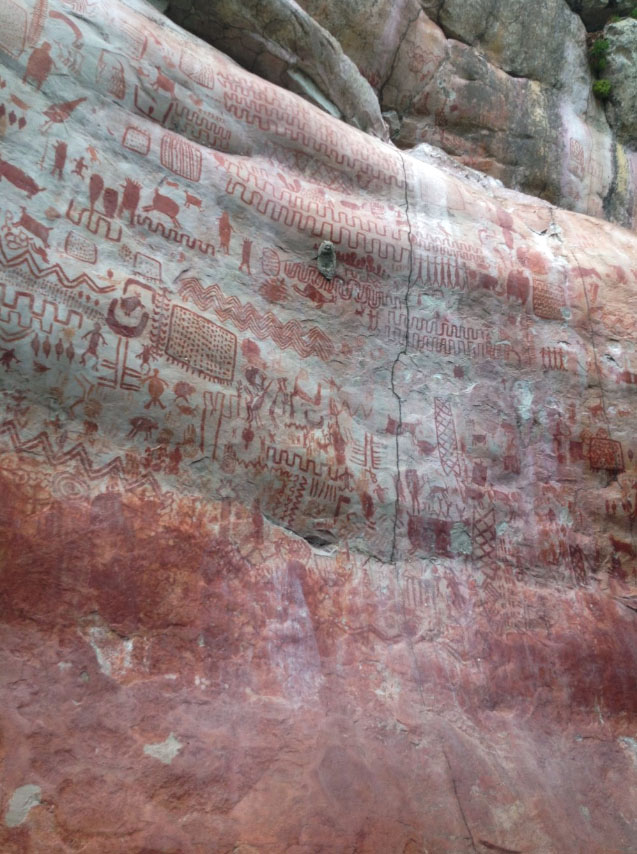
The earliest humans who reside in western Amazonia created these truly amazing drawings, according to study co-researcher Mark Robinson, an archaeologist at the University of Exeter. He had the opportunity to investigate the rock art alongside Colombian researchers.
Researchers had to obtain permission from the Colombian government and the local rebel groups in order to investigate Serrana de la Lindosa’s artwork. After that, it took them 5 hours to walk to the destination.
The experts were astounded by the enormous quantity of individual paintings, which number in the tens of thousands but have not yet been numbered. They show ancient humans living alongside the flora and creatures that formerly inhabited the Amazon region. A modern visitor would recognize fish, lizards, and porcupines in the illustrations, but they also show extinct prehistoric animals like mastodons, palaeolama, and enormous sloths. The environment those creatures lived in was much different from the contemporary rainforest, consisting of grasslands and scrub brush.
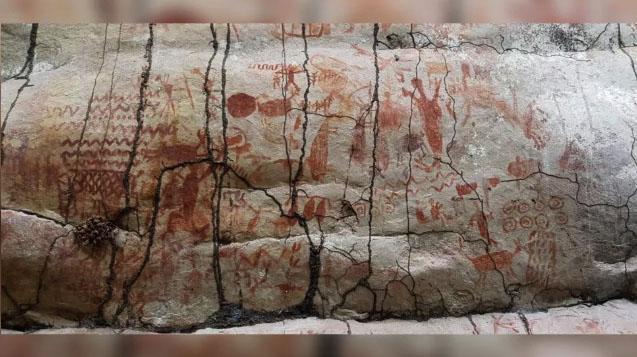
The prehistoric humans wearing masks, dancing, and hunting are also shown in the old artwork. The archaeologists studying the paintings, however, can only speculate as to what specific scenarios genuinely signify at this time. Nevertheless, experts are confident that the Serrana de la Lindosa paintings will shed important light on prehistoric human behavior as well as relationships between humans and animals.
The actions seen in the illustrations include people being suspended from or jumping from wooden towers, which is undoubtedly an odd one. The research team thinks that devices like these could help to explain how the ancient painters were able to paint pictures on the cliff wall that were considerably above the average human head height.
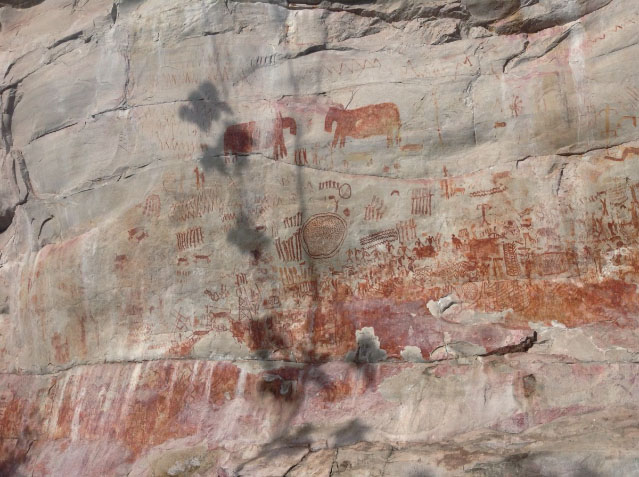
The cliff art captures a moment in time when the landscape was changing at the end of the last Ice Age. Robinson said that at the time, “the Amazon was still evolving into the tropical jungle we recognize today.” The Amazon was once a mosaic of savannas, thorny brush, and forest, but warming temperatures transformed it into the lush tropical rainforest it is today.
The opportunity to view ice period megafauna, a time marker, was one of the most exciting aspects of the rocks, according to archaeologist and explorer Ella Al-Shamahi. People may not be aware of how the Amazon has changed in appearance. Not always has there been a rainforest here.
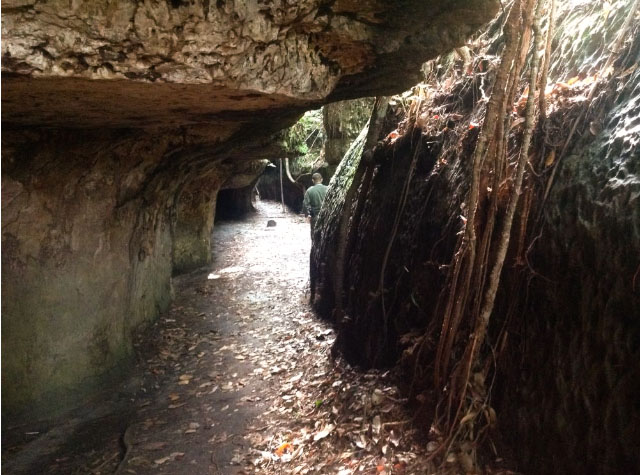
According to Robinson, “the paintings provide a vivid and fascinating view into the life of these communities. To imagine that they hunted and coexisted with enormous herbivores, some of which were the size of small cars, seems incomprehensible to us now. The researchers claim that numerous huge creatures from South America went extinct towards the conclusion of the last Ice Age, most likely as a result of a combination of human hunting and climatic change.
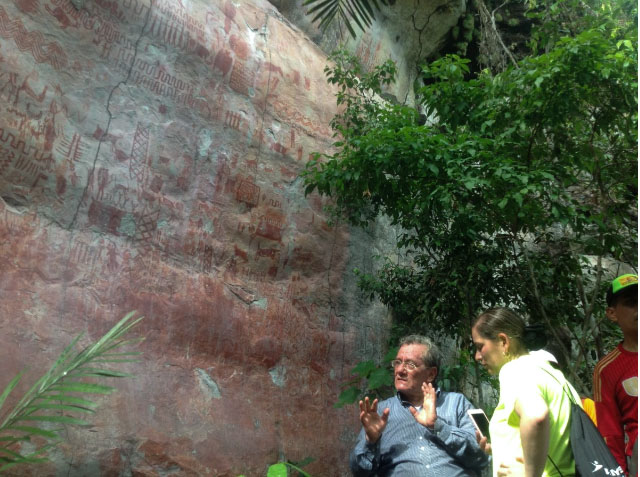
These camps were some of the first human settlements in the entire Amazon, according to excavations carried out inside the rock shelters. According to the experts, they provide information about the diet of these early hunter-gatherers together with the paintings. For instance, the discovered bone and plant remains show that their diet included paca and capybara mice, piranhas, snakes, alligators, frogs, and armadillos.
Following the 2016 peace agreement between the Colombian government and the FARC, a rebel guerrilla group, the rock bunkers were unearthed in 2017 and 2018. Following the peace accord, scientists started a project called LastJourney to investigate the origins of human habitation in the Amazon and the effects that farming and hunting had on the biodiversity of the area.
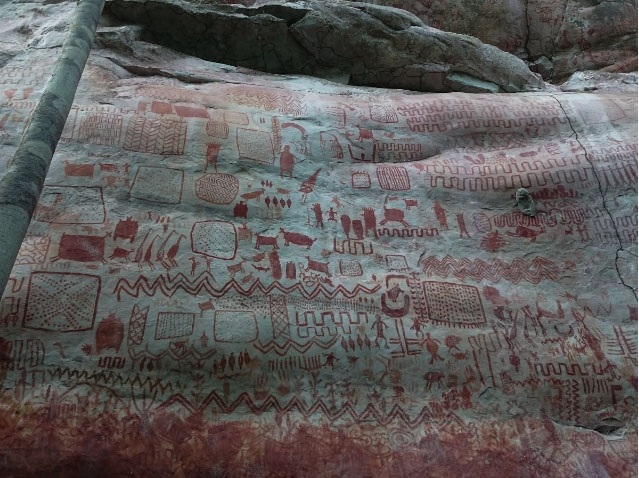
According to a statement from study co-researcher José Iriarte, an archaeologist at the University of Exeter, “these rock paintings provide amazing evidence of how humans reconstructed the land, and how they hunted, farmed, and fished.” “It is likely that art was a potent component of culture and a means of social connection for people.”
The epidemic has put a stop to studies at the site, but the team thinks the neighboring rainforest holds additional prehistoric treasures waiting to be found.


